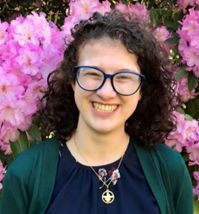An Introduction to X-ray Astronomy and Active Galactic Nuclei- Physics Seminar
February 12, 2025 (4:15 pm)
Location: ELL 303

An Introduction to X-ray Astronomy and Active Galactic Nuclei
Wednesday, February 12, 2025 at 4:15 pm
Elliott Hall Room 303 (ELL 303)
Margaret Buhariwalla
PhD Candidate
Department of Astronomy and Physics
Saint Mary’s University
What produces the X-rays in space? How do we detect them? What can they tell us about the extreme environment where they originated from?
The seminar will begin with a brief introduction of how X-ray telescopes work, including the optical components and detection methods employed. As a part of this, some X-ray telescopes that are currently in use by teams around the world will be presented. Supermassive black holes (SMBH) reside at the centre of all galaxies, and astrophysical X-rays are produced in the extreme environment surrounding SMBHs. Active Galactic Nuclei (AGN) actively consume material from their host galaxy and are incredibly efficient at transforming mass into energy and this energy is released in a variety of ways, resulting in extremely bright objects. Light can be detected from right next to the black hole all the way out to several thousand light years away. By studying the X-ray spectra of these bright objects over these very large distances, our understanding of galactic evolution is greatly enhanced.
Margaret Z. Buhariwalla (BScH ‘19) is a PhD candidate at Saint Mary’s University, working with Dr. Luigi Gallo. Her research focuses on high-resolution X-ray spectroscopy, particularly narrow X-ray emission lines, and what they reveal about the physical and dynamic properties of the environments in which they are produced. She has been awarded observing time on space-based telescopes operated by NASA and the European Space Agency (ESA). She was part of the performance verification team for XRISM, the latest X-ray telescope to launch. Margaret is also deeply committed to public outreach and engaging diverse audiences with the latest developments in astronomy. She enjoys finding creative ways to make complex scientific concepts accessible to everyone.
